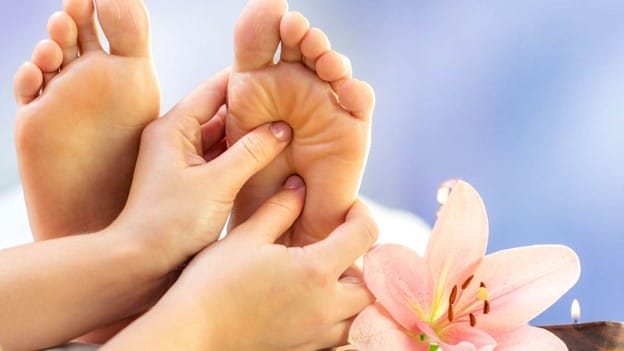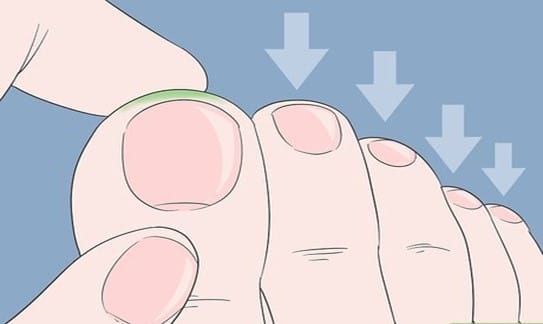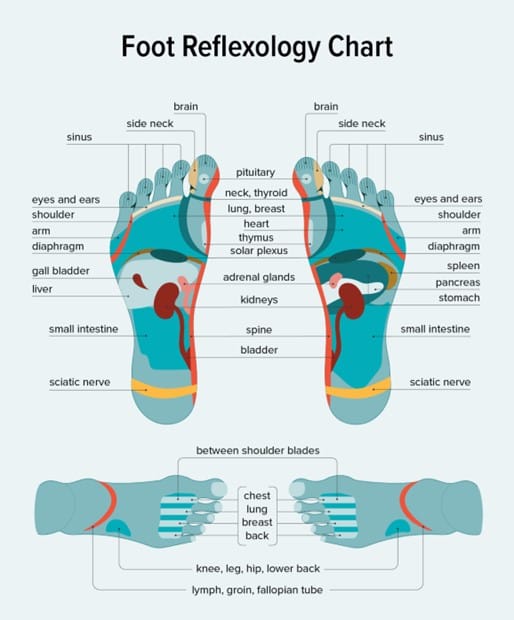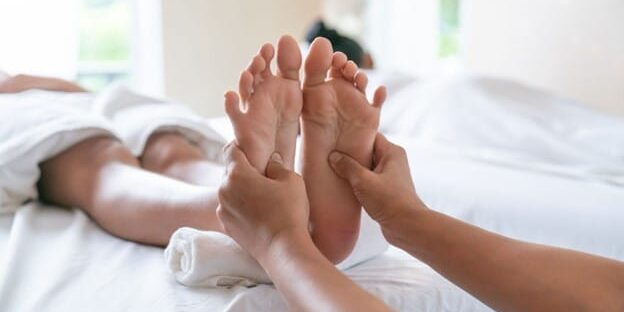Let’s not sugarcoat it. If you’re like most people in Edmonton, your body is screaming for help. You’re sore. You’re stressed. You’re waking up tired and going to bed wired. You’ve tried painkillers, hot baths, even that fancy massage chair that cost a fortune and now doubles as a laundry rack.
But here’s the cold, hard truth: your body doesn’t need more band-aid solutions. It needs balance. And that’s exactly where reflexology comes in.
Whether you’re struggling with migraines, sports injuries, sleep disorders, or just the weight of modern life, reflexology isn’t just a foot rub—it’s a powerful, ancient healing method that taps into your body’s natural ability to recover and thrive. Many Edmontonians are now turning to reflexology to improve their health, reduce pain, and restore energy naturally.
What is Reflexology, Really?
Forget what you think you know. Reflexology is not just a massage. It’s a precise, pressure-point therapy that targets specific zones in your feet, hands, and ears—each corresponding to different organs, glands, and systems throughout your body.

The technique is grounded in both ancient Chinese medicine and modern neurology. According to the zone theory, your body is divided into ten vertical zones. By applying strategic pressure to reflex points within these zones, reflexologists stimulate the nervous system, improve blood flow, and restore balance to the body.
In other words, reflexology is like rebooting your internal operating system.
“Reflexology helps the body heal itself by activating the parasympathetic nervous system, which is where real recovery happens,” says Laura Norman, a pioneer in modern reflexology. “It’s not just about relaxation—it’s about rebalancing the body from the inside out.”
The Science Behind the Magic
Still think reflexology is just woo-woo wellness? Think again.
Research from Healthline and the University of Minnesota shows that reflexology is linked to measurable improvements in stress, pain, anxiety, and overall well-being. In fact, a 2014 meta-analysis found that reflexology significantly reduces anxiety and improves sleep quality in people with chronic health conditions.
A 2019 systematic review found promising evidence that reflexology can:
- Lower cortisol levels (your stress hormone)
- Alleviate pain and inflammation
- Improve blood circulation
- Support immune function
- Help manage PMS, migraines, and even labor pain
That’s right. Just by stimulating specific points on the feet, you can trigger a cascade of healing effects throughout your entire body.
Reflexology: Who’s It For?
Most of us walk around carrying more stress, tension, and hidden imbalances than we realize. And sometimes, pain is the last symptom to show up. Reflexology is for anyone who wants to stop reacting to symptoms and start proactively supporting their health.
If you’re in Edmonton and dealing with any of the following, reflexology might be exactly what you need:
- Chronic stress or anxiety that wears you down by the end of the week
- Migraines and tension headaches that seem to come out of nowhere
- Back pain or sciatica that flares up after long days at your desk
- Digestive disorders that affect your energy, mood, and focus
- Hormonal imbalances disrupting your sleep, skin, or cycle
- Sports injuries and muscle tightness from overtraining or past trauma
- Fatigue and low energy that no amount of coffee can fix
- Sleep issues like insomnia, light sleep, or restless legs
Even if you’re not currently in pain, reflexology is a powerful preventative therapy. Regular sessions help your body stay balanced, reduce inflammation, and keep your nervous system from slipping into overdrive.
A Little DIY Reflexology Between Appointments
Can’t make it to the clinic this week? Here’s a simple way to bring a bit of reflexology into your daily routine—no fancy tools needed.
The Tension-Busting Foot Roll
- Grab a tennis ball or golf ball.
- While seated, place the ball under your foot.
- Roll it slowly from your heel to your toes for about 2–3 minutes on each foot.
This helps stimulate major reflex points, improves circulation, and releases built-up tension—especially if you’ve been on your feet all day.
Press-and-Hold for Headaches
- Locate the reflex point for your head—this is found on the tips of your toes.
- Use your thumb and apply gentle but firm pressure in circular motions for 30 seconds to a minute.

Many clients report this technique offers quick relief for tension headaches and stress.
These simple techniques won’t replace a full reflexology session, but they can hold you over between visits and keep your energy flowing.
How Reflexology Compares to Massage Therapy
It’s a common question: “Isn’t reflexology just another kind of massage?”
Short answer: Absolutely not.
Massage therapy works on the muscles and soft tissue of the whole body. It’s excellent for loosening knots, improving range of motion, and calming the physical tension stored in your muscles.
But reflexology? That’s an entirely different beast.
Reflexology targets specific pressure points that correspond to your organs, glands, and systems. It goes deeper—not in terms of pressure, but in terms of function. It taps into the autonomic nervous system and supports internal regulation. Think hormone balance, digestion, sleep cycles, and even immune function.
So while massage works wonders on your body’s outer layers, reflexology addresses what’s happening under the surface—your internal wiring, your energy pathways, and the control centers that regulate how your body heals and responds to stress.
Think of massage therapy as tuning the outside of the instrument. Reflexology? That’s adjusting the circuitry inside the control panel.
That’s why so many people choose to combine both therapies for a more complete approach to health and recovery. Together, they create a synergy that covers both the muscular and systemic sides of wellness.
Reflexology for Sports Injuries and Athletic Recovery
Here’s one most people don’t expect: reflexology is incredibly effective for sports recovery.
Athletes in Edmonton—from weekend warriors to marathoners—use reflexology to:
- Reduce inflammation post-workout
- Speed up recovery from sprains and strains
- Improve flexibility and mobility
- Loosen tight fascia and tendons
- Enhance performance through better circulation and energy flow
According to Laura Norman’s Blog, reflexology stimulates the lymphatic system, clears lactic acid buildup, and can reduce downtime after injury. Reflexology also targets the adrenal glands and kidneys (located along the arches of the feet), which support the body’s stress response and natural detox processes—both essential for optimal performance and recovery.
Research published in the Journal of Complementary Therapies in Clinical Practice supports the idea that reflexology can improve post-exercise recovery times by increasing blood flow and supporting parasympathetic nervous system activation—the “rest and repair” mode athletes need after intense training.
Simple DIY Reflexology Tips for Athletes:
- After a tough workout, roll a frozen water bottle under your feet for 5–10 minutes to stimulate foot reflex points and reduce inflammation.
- Press along the inside arch of the foot (spine reflex) and below the ball of the foot (diaphragm reflex) to promote relaxation and deeper breathing.
- Use your thumbs to apply circular pressure to the heels—this corresponds to the pelvic region and can ease hip and lower back tightness.

Consistency is key. Incorporating even a few minutes of reflexology into your post-workout routine can help you bounce back faster, reduce injury risk, and improve body awareness over time.
In other words, reflexology helps you heal faster and play harder.
Reflexology and Better Sleep: A Natural Nighttime Reset
If you’re tossing and turning at night, reflexology could be the holistic solution you’ve been searching for. Poor sleep isn’t just about being tired—it affects your immune function, mental clarity, hormone balance, and long-term health.
Reflexology addresses multiple root causes of sleep disorders. By stimulating specific reflex points, it helps reduce stress hormones like cortisol while encouraging the release of melatonin—the hormone responsible for regulating your sleep-wake cycle.
A 2020 study published in Sleep Science found that reflexology significantly improved sleep quality and reduced symptoms of insomnia in adults with chronic sleep disturbances. Another 2014 study in Complementary Therapies in Clinical Practice reported that reflexology reduced anxiety and improved subjective sleep quality among clients undergoing medical treatments.
Many people report that after just one session, they fall asleep faster, wake up less during the night, and feel more rested the next day. And when treatments are done consistently, the results compound. Your nervous system becomes less reactive, your hormones stabilize, and your mind stops racing at night.
If conditions like insomnia, restless leg syndrome, night sweats, or even chronic pain are stealing your sleep, reflexology might be the missing piece.
Clients at The Self Centre often say they experience the best sleep of their lives after a reflexology session. And science backs that up—with research showing improved sleep quality, reduced anxiety, and better emotional regulation in people who receive regular treatments.
It’s a drug-free, side-effect-free way to finally sleep like your body’s meant to.
Try This DIY Bedtime Reflexology Routine
You don’t need to be a professional to tap into reflexology’s relaxing, sleep-promoting effects. Try this 5–10-minute bedtime ritual to help calm your nervous system and prepare for deep rest:
- Relax your feet with light squeezing, kneading, or pressing motions. Finish by pressing your thumb gently into the solar plexus point on each foot (located just below the ball of the foot) and hold for 5–10 seconds.
- Thumb-walk up from the heel to each toe on the bottom of the foot—this stimulates the spine, brain, and nervous system.
- Gently press and massage the following reflex points. Use the reflexology chart, by Laura Norman, below to help pinpoint exact areas:
- Top of each toe: Head/brain – helps calm mental chatter
- Center of big toe: Pituitary gland – balances hormone production
- Outer side of big toe: Pineal gland – encourages melatonin release
- Base of big toe: Thyroid – supports metabolism and energy balance
- Ridge under the toes: Neck and shoulders – relieves physical tension
- Ball of foot: Chest and lungs – promotes calm, easy breathing
- Center under the ball of foot: Solar plexus/diaphragm – deep relaxation
- Apply light feathering strokes—called “breeze strokes”—across the top, bottom, and sides of each foot to soothe the nervous system.
- Finish by repeating a calming affirmation such as, “I welcome deep rest and peaceful sleep.”

This simple practice not only prepares the body for rest—it clears the mind and signals safety to the nervous system. Over time, these consistent cues can help rewire your internal sleep patterns and lead to deeper, more restorative sleep.
Book Your Reflexology Appointment Today
Look—if you’ve read this far, your body is probably telling you something. It’s time to stop patching the symptoms and start addressing the root causes.
You’ll get a fully customized, deeply relaxing treatment from a certified professional who listens. No pushy sales. No gimmicks. Just healing.
📍 Visit us at: 2324 Ellwood Dr SW, Edmonton, AB T6X 0A9
📞 Call to book: (780) 485-1404
💻 Book online: Reflexology Booking Page
Whether it’s pain, stress, hormones, sleep—or all of the above—Reflexology is your natural, no-nonsense solution.
Don’t wait until your body is screaming.
Book your Edmonton reflexology session today and feel the difference tomorrow.


